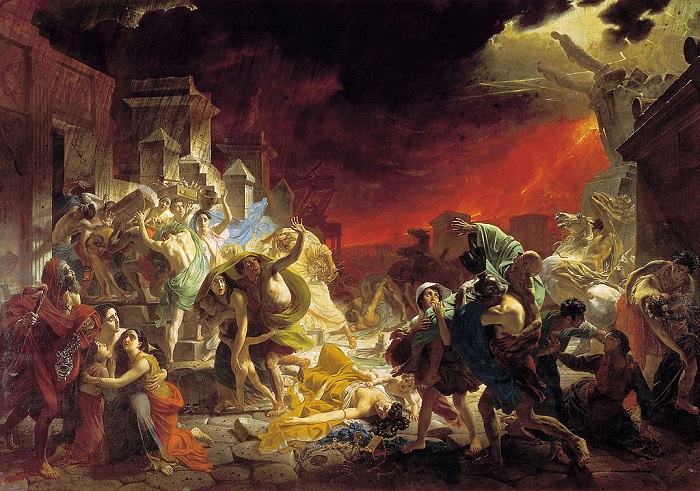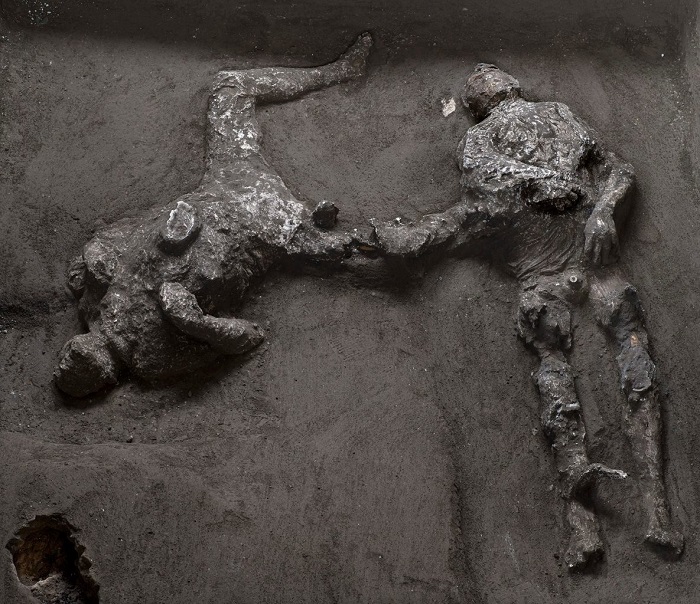ISABEL RUBIO ARROYO | Tungsteno
Pompeii has gone down in history as the Italian port city buried by the eruption of Mount Vesuvius in 79 AD. Beneath the six metres of ash and pumice under which it was buried, there were elegant villas, public buildings, open squares, artisan shops, taverns, bathhouses, brothels and even an amphitheatre that hosted gladiatorial games. We look at the construction and history of the only archaeological site in the world that offers a complete picture of an ancient Roman city.
A Greco-Roman city frozen in time
This port city, located in the Campania region, had existed since at least the 6th century BC. The eruption of Mount Vesuvius in 79 AD poured volcanic debris over the entire city. In the days before, as the lawyer and writer Pliny the Younger recounts in a letter, there were many tremors, "a common occurrence in Campania and no cause for panic". "But that night the shaking became much stronger," he says. Vesuvius was about to erupt. When it did, the buildings were destroyed, and the population was crushed and suffocated. At the time of the eruption, between 10,000 and 20,000 people were living in this city and exporting products to the entire Mediterranean region.
For many centuries, Pompeii slept under a six-metre-deep hardened carpet of ash and pumice. Its long slumber came to an end in the 18th century, when a group of explorers discovered the almost perfectly preserved city. Although the eruption caused the roofs of many houses to collapse, the remains of the 3-km-long city walls, enclosing an area of about 66 hectares, were found. On this site, according to the United Nations Educational, Scientific and Cultural Organisation (UNESCO), was the main forum, flanked by a number of imposing public buildings, such as the Capitolium, the Basilica and temples. In addition to numerous public bath complexes, the city also had two theatres and an amphitheatre. Under the ashes, bakeries with bread still in the ovens and hollows with human remains were also found. Archaeologists filled these hollows in the volcanic material with plaster, which made it possible to make moulds in the shapes of the human and animal victims.

Some of Pompeii's inhabitants were buried under ash and pumice. Credit: Pompeii Sites.
Materials reused to build Pompeii
Pompeii is a prime example of the urban planning and construction of an ancient city. The Romans, in addition to building iconic aqueducts and being experts in the use of concrete, were also masters of recycling. According to research, they used some of their waste, such as pottery and plaster, as building materials. Archaeologist Allison Emmerson of the University of Cincinnati explains that "part of the city was built out of trash". The inhabitants of Pompeii collected waste in large mounds outside the city walls. Their aim, according to Emmerson, was not to get rid of it, but to sort it for resale in the city.
"The Pompeians lived much closer to their garbage than most of us would find acceptable, not because the city lacked infrastructure and they didn’t bother to manage trash but because their systems of urban management were organised around different principles," she says. Some of Pompeii's walls were built with reused materials such as pieces of tile and broken amphorae, as well as lumps of mortar and plaster. Almost all of these walls "received a final layer of plaster, hiding the mess of materials within".
Beyond this reused waste, most of the stones used for the buildings in Pompeii come from local quarries, mainly located in various localities in and around the Sarno River plain. In many of the stones that form the walls and streets of this city, there is something that attracts the attention of visitors: they are peppered with figures of penises. One of the main hypotheses is that phalluses were good luck signs or symbols meant to ward off the Evil Eye. For this reason, they are often found outside homes.
Pompeii, a UNESCO World Heritage Site, is suffering from the wear and tear of tourist traffic and the ravages of the weather. Credit: Timeline - World History Documentaries.
More than two centuries after the rediscovery of Pompeii, this legendary city is still very well preserved. However, it remains under constant threat from wear and tear caused by tourist traffic, potential landslides and the ravages of the weather. To identify structural and security problems, the archaeological park has turned to Spot, a robot dog developed by the US company Boston Dynamics, which will also inspect narrow, hard-to-access tunnels dug by tomb robbers. The goal is clear: to ensure that this archaeological treasure, declared a World Heritage Site by UNESCO, continues to offer fascinating journeys back in time to millions of tourists from all over the world.
· — —
Tungsteno is a journalism laboratory to scan the essence of innovation. Devised by Materia Publicaciones Científicas for Sacyr’s blog.
